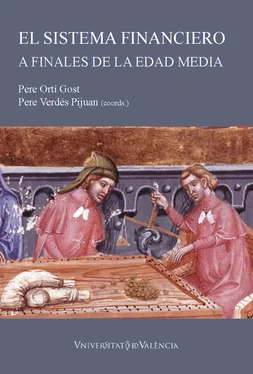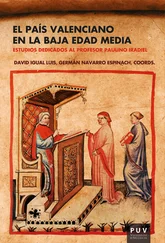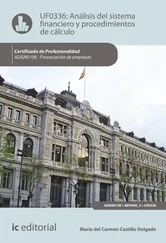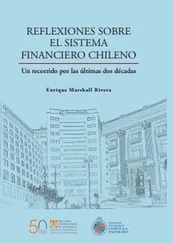1 ...6 7 8 10 11 12 ...37 I
For many historians, polities’ capacity to borrow was crucial for the development of financial markets. Polities were usually among the most important borrowers in financial markets, and it has also been suggested they provided the investing public with a relatively safe haven for their savings. However, few studies have been able to establish how big the attraction of public debt was, and what effect this had on the redistribution of savings in emerging financial markets. This article asks to what degree public debt created by late-medieval polities helped to move savings from one place to another, and thus helped to bring together the supply of savings, and the demand for loans. To this end we focus on the geographic spread of creditors of several towns, and demonstrate how these towns managed to borrow from both citizens and non-residents. Late-medieval towns were not only active in local markets, but also had access to financial markets in their surroundings, and even those abroad. In theory such access to various financial markets should have brought about price convergence. To study whether this was the case, we also look at the interest rates polities paid on their public debt. Interest rates were quite similar, both towns, and even between towns and villages, which suggests that most polities had reasonably good access to at least several financial markets.
Interest rates on public debt gradually converged from 1300-1800: S.R. Epstein demonstrated a decline in interest rates in several regions of Europe, and more importantly, a convergence between these regions. 1 This would suggest the existence of structures that in the long run helped to smooth spatial differences in supply and demand of savings. To be sure: why interest rates declined is still debated. Some scholars have suggested that this was due to an increase in coins per capita, at first because of depopulation in the wake of the Black Death, 2 later because of improvements in silver production and due to increased mining activity in Central Europe, and the America’s after 1492. 3 Others, following the seminal article by Douglass North and Barry Weingast on the English financial revolution, have claimed that interest rates could drop because improvements to the institutional framework of financial markets caused a reduction of risks and/ or the gradual integration of markets. Later, North even claimed that the level of interest rates is altogether the best indicator for the development of market structures. 4 In this respect, some have also pointed at the gradual integration of financial markets, for instance due to the emergence of monetary unions. 5 The latter views all assume savings were moved around more efficiently due to improved market structures.
A recent contribution to the latter strand of literature is David Stasavage’s study States of credit. Size, power and the development of European polities . Stasavage discusses one of the major puzzles of financial history: why did medieval city states and towns manage to borrow at lower cost than territorial states? He argues that the latter suffered from what we might call «diseconomies of scale»: due to large distances, it took relatively long to organize a meeting of the representative bodies responsible for debt management. In city states and towns, this could be done much faster, causing representatives to meet much more frequently. This allowed them to keep a close eye on public finance, which according to Stasavage made lending to city states and towns less risky. As a result these could borrow more and at better conditions than territorial states. Representatives of city states and towns also had a good reason to monitor public finance because they themselves were often major investors in public debt. These stakeholders thus had incentives to attend council meetings, and due to the low distances they had to cover, they could do this without much trouble. Stasavage’s main example is the General Council of Siena, which in the thirteenth century was also known as «Council of the Bell» because its members could simply be assembled by chiming a bell. 6 Public finance, in Stasavage’s study, was a strictly local affair: polities borrowed from their citizens, investors lent to their city state or town. This may have been usual in polities such as Italian city states, where investing in public debt (via the so-called Monte loans) either was a privilege of citizens, or a duty weighing upon the wealthiest inhabitants, who were forced to lend. 7 Under such circumstances the group of creditors indeed coincided with citizens. However, this was not at all the case in the late-medieval Northern Low Countries, where towns also borrowed from foreigners living out of town, and often even outside the province. Here, financial markets allowed for savings to be moved around, from places where supply was high, to places where demand was high.
Such «foreign investment» is important for our understanding of polities’ access to credit, and hence the way they were able to position themselves in negotiations with rulers. Since there were always far more savings available outside a polity than inside, a polity that was able to convince «foreign» savers to invest in its public debt could improve its political position. In doing so it might even achieve a comparative advantage over its competitors: the ability to borrow money from abroad may have allowed relatively small polities to match the financial muscle of larger polities. In this way the capacity to create public debt can be linked to processes of state formation: according to Charles Tilly access to financial markets allowed polities to negotiate rulers’ demands, and to receive privileges in return for funding. 8 Also, polities’ access to financial markets has been regarded as a driving force in altering relations between rulers and subjects, and the emergence of supra-local institutions, such as parliaments where various polities cooperated in negotiating with rulers. 9 To understand why over time some polities expanded, overtaking others in the process, it is important to look at to what degree they managed to attract «foreign funds» –and at what cost they did this–.
This article investigates to what degree financial markets in the late-medieval Northern Low Countries helped to move savings around from one polity to another. It also asks whether it feasible that this contributed to the gradual convergence of interest rates, by smoothing supply and demand. We will demonstrate that a considerable part of the creditors of towns in the Northern Low Countries consisted of «foreigners», and that these foreigners were usually among the more important investors in public debt. These were not citizens who could exercise direct control over their investments via participation in representative councils. Yet, they lend handsome sums of money to foreign public bodies at relatively low interest rates. This finding suggests that apart from the mechanism Stasavage described, and that allowed for investment by members of a polity, there were others in the late-medieval economy allowing for «foreign investment». These will be discussed in section II, providing an overview of the financial instruments used to move savings around, and the market structures that allowed for this. Next we proceed by studying foreign investment by looking at the geographic distribution of investors in public debt of the towns of Leiden in Holland (in the west of the present-day Netherlands), Groningen in the Ommelanden (in the northeast) and Nijmegen in the duchy of Guelders (in the east) (section III). We then proceed with the question of the efficiency of markets: did this moving around of savings contribute to price convergence? To get an impression of this we look at interest rates on the public debt of hundreds of towns and villages in Holland, in 1514 (section IV).
Читать дальше












![Rafael Gumucio - La edad media [1988-1998]](/books/597614/rafael-gumucio-la-edad-media-1988-1998-thumb.webp)